- Health Conditions A-Z
- Health & Wellness
- Nutrition
- Fitness
- Health News
- Ayurveda
- Videos
- Medicine A-Z
- Parenting
- Web Stories
Bird Flu Crisis In US Is Making Eggs Costly, Try These Unexpected Protein-Packed Substitutes Instead
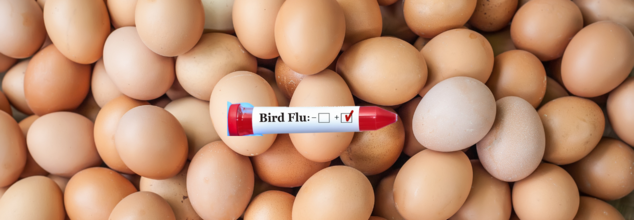
The ongoing bird flu epidemic in the U.S. has thrown the poultry industry including the farmers into a state of turmoil, resulting in a staggering rise in egg prices. The highly pathogenic avian influenza (H5N1) has ravaged commercial flocks, and massive culling operations have been undertaken to stop the spread of the virus with no success yet. Consequently, the cost of eggs has increased dramatically, to an average of $5 per dozen in January 2025, with prices reaching as much as $15 per dozen in some areas.
The United States Department of Agriculture (USDA) recently issued a warning in bleak terms—egg prices, already elevated by almost 37% since last year, may go up another 41.1% in 2025 owing to continued shortages. This has got consumers up in arms, compelled to turn towards cheaper substitutes, and is creating food security worries as well.
Although the USDA assures consumers that poultry products, including eggs, are safe to consume when cooked properly, the growing transmission of avian flu from birds to mammals has raised broader concerns. The virus has now been identified in 485 bird species and 48 mammal species, such as sea otters, dolphins, and polar bears.
Even with colossal culling drives, the pandemic keeps spreading, which has caused supply chain interruptions and forced customers to seek alternatives to eggs—economically as well as ethically, for reasons of health, and to ensure sustainability. As plant-based and alternative protein gains steam, perhaps it's time to look for egg substitutes that are nutritionally equivalent without being so expensive.
What are Some Egg Alternatives
As egg prices remain volatile, the demand for protein-packed substitutes has surged. While eggs have long been a staple for their high protein content, versatility, and culinary ease, several alternatives can effectively replace eggs in cooking, baking, and even breakfast scrambles.
If you’re looking for nutritious and affordable substitutes, here are some unexpected protein-rich options that can seamlessly replace eggs in your diet.
1. Mung Beans
Mung beans, also referred to as green gram or moong beans, have been grown in South Asia for thousands of years. With their high protein and fiber content, these tiny green legumes can be converted into a liquid egg alternative that replicates the texture and flavor of regular eggs.
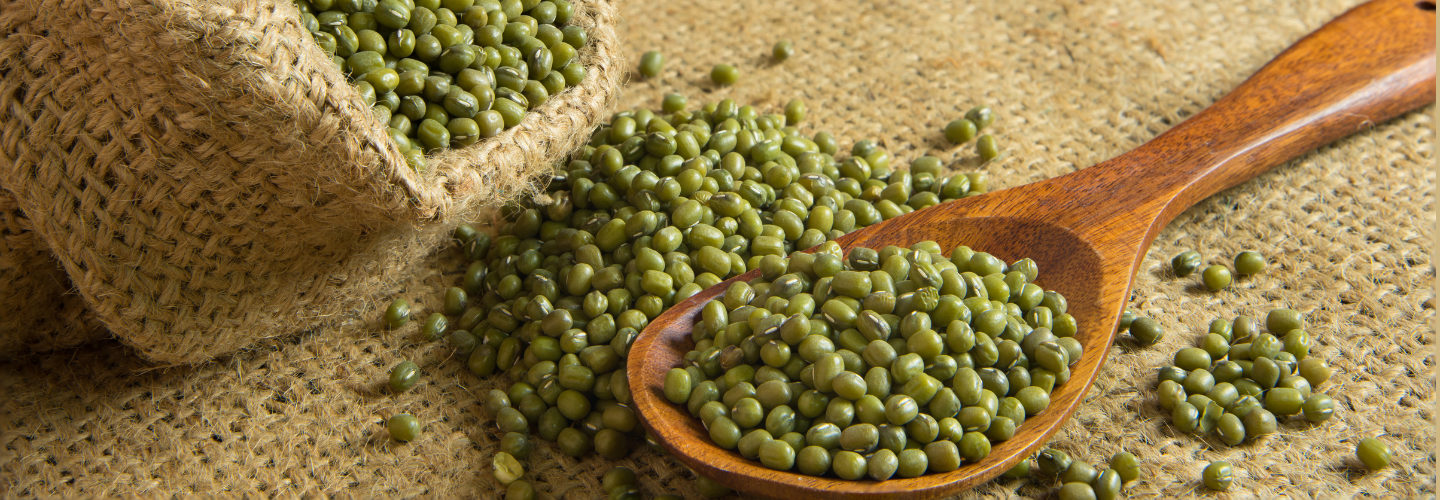
By mixing soaked mung beans with kala namak (black salt, with an egg-like taste), it is possible to make a foundation for scrambles, omelets, and even quiches. Mung bean liquid egg substitutes, such as are used in packaged vegan egg mixtures, are a cholesterol-free, protein-laden substitute that closely approximates the original.
How to Prepare a Mung Bean Scramble
- Wash and soak 1 cup of mung beans overnight.
- Mix soaked beans, water, turmeric, and kala namak until even.
- Heat a pan with oil and scramble it as you would scramble eggs.
- Season with vegetables, herbs, or spices to give it some zing.
This easy switch is a protein-rich, green, and allergy-friendly substitute for eggs.
2. Chickpea Flour
Chickpea flour or besan, as it's also called, or gram flour is another very good egg substitute. Chickpea flour, being a source of plant protein, can be combined with water and spices and cooked to become an omelet-like preparation.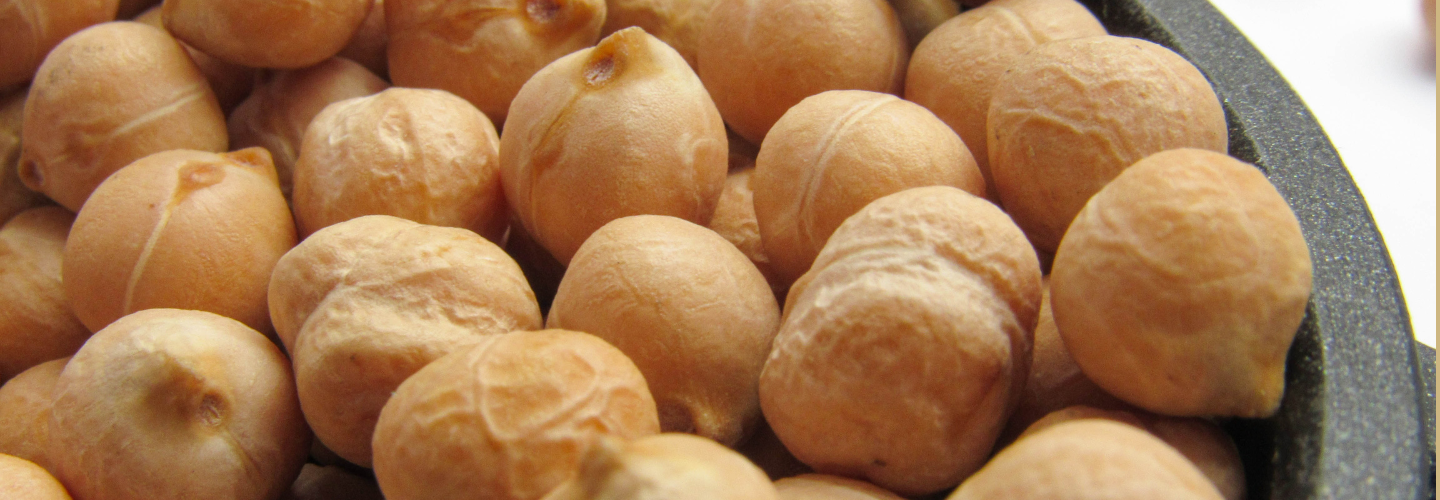
To prepare a chickpea omelet, combine chickpea flour with nutritional yeast, black salt, and black pepper. Whisk in water gradually until it has the consistency of a smooth batter. Fry the mixture like a pancake, turning it once bubbles form on the surface. This protein-rich choice provides the texture and flavor of eggs at a fraction of the price.
3. Tofu
Tofu is perhaps the most versatile egg substitute. It can be scrambled, blended, or even baked to substitute eggs.
Tofu Scramble: Break up firm tofu, add turmeric and black salt for the eggy taste, and sauté with vegetables for a protein-rich breakfast.
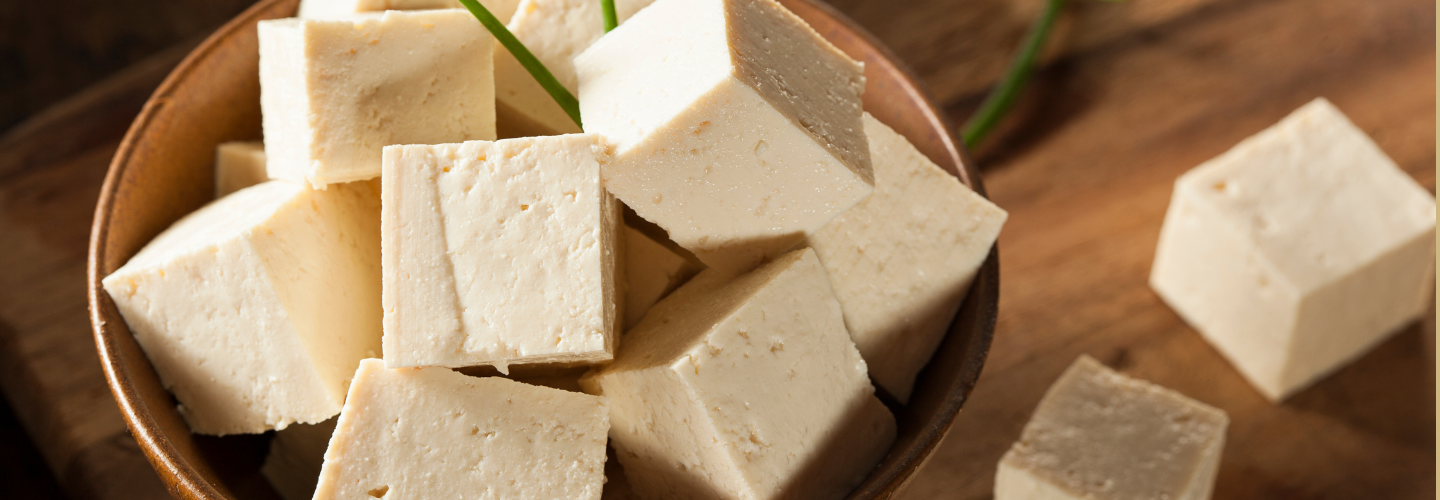
Silken Tofu in Baking: Silken tofu may be substituted for eggs in cakes, muffins, and custards. Just blend 1/4 cup silken tofu for each egg and add it to your batter for moisture and texture.
Tofu in Stir-Fries and Salads: Firm tofu can be cut into small pieces and added to salads or stir-fried for a healthy, protein-packed meal.
Containing 10 grams of protein per half cup, tofu is a cheap and convenient substitute for eggs for cooking and baking purposes.
4. Flaxseeds and Chia Seeds
For bakers who have depended on eggs as a binding ingredient, the flaxseed and chia seeds provide an instant plant-based answer. When used with water, the seeds will gel into a texture that binds in a manner similar to the eggs.
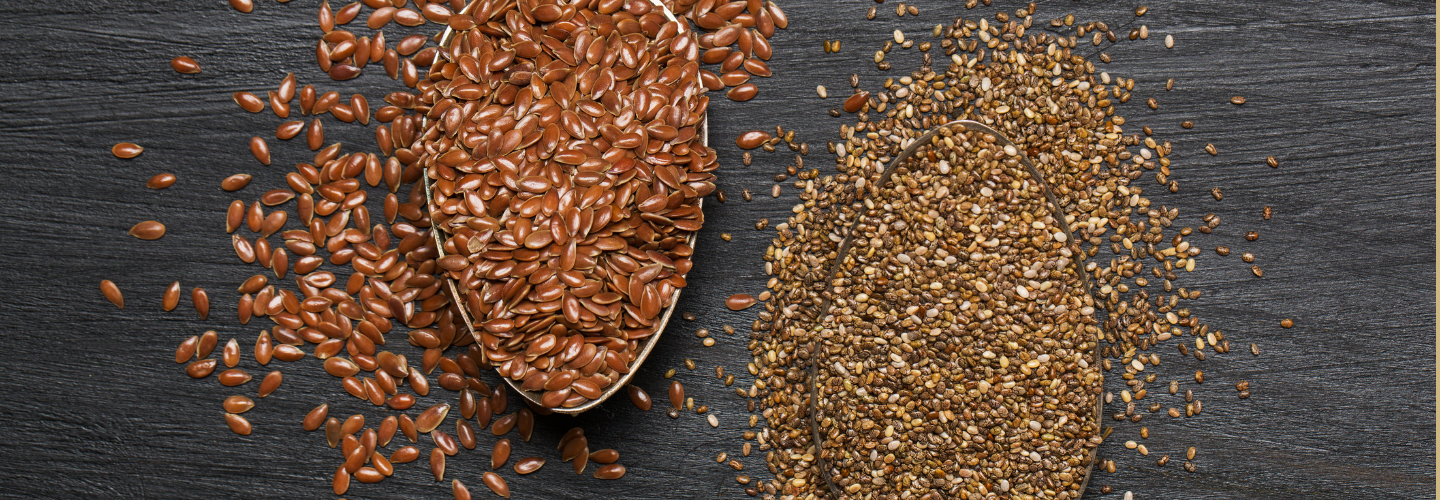
- Combine 1 tablespoon of ground chia seeds or flaxseeds with 3 tablespoons of water.
- Allow it to sit for 5–10 minutes until it becomes gel-like.
- You can use this mixture as a 1:1 substitute for eggs in baked items.
The seeds are rich in fiber, omega-3 fatty acids, and protein and are a healthy substitute for eggs.
As the bird flu crisis continues to rage on, consumers are presented with difficult decisions regarding food prices. However, the bright side of this crisis is the growing availability of alternative protein sources that not only offer cost savings but also comply with ethical and environmental concerns.
From mung beans and chickpea flour to tofu and flaxseeds, a variety of plant-based options can easily replace eggs in cooking and baking without sacrificing nutrition or flavor. Whether you’re looking to save money, reduce your environmental footprint, or explore plant-based eating, these protein-packed substitutes offer a sustainable and delicious way forward.
National Nutrition Week 2025: What Happens To Your Body When You Drink Almond Milk Everyday?
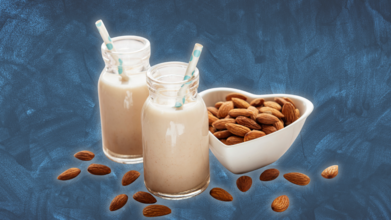
Credits: Health and me
From roasted almond handfuls as a snack to almond flour in gluten-free cooking, this nut has become a staple in daily diets and when discussing nutrition, almonds nearly always find their way onto the list. With their high levels of healthy fats, antioxidants, and vitamins, this little nut has been touted as a superfood for a long time. But over the past decade or so, almonds have come in a new guise that has appeared in millions of kitchens across the globe—almond milk. Almond milk is creamy, dairy-free, and frequently fortified with important nutrients. It's become the first choice for those who'd rather not indulge in regular dairy.
National Nutrition Week is annually celebrated from September 1 to 7, and it acts as a reminder to take stock of how our diet contributes to our well-being. The theme for 2025, as in the past, is all about balanced diets, nutrient-dense foods, and bringing awareness to silent nutritional deficiencies. Almond milk is perfectly a part of this discussion. Whereas plant-based diets are on the rise due to environmental, ethical, and health considerations, you need to know whether substituting dairy with almond milk is boosting or detracting from your long-term health. What does actually happen when you consume it daily? Is it a good habit—or does it have some secret downsides you should find out?
Also Read: Even 'Minimal' Portion Of Ultra-processed Foods Sabotage Male Fertility And Metabolism
Smooth in texture and nutty in taste, almond milk is now being poured into lattes, blended into smoothies, and stirred into cereal bowls as a substitute for cow's milk. But with so much hype, the question is, is drinking almond milk daily really good for you, or are there unsuspected downsides to be on the lookout for?
Cow's milk has been the default choice for generations—be it for dipping cookies, stirring into oatmeal, or frothing for coffee. However, almond milk sales in the United States have continuously increased year after year, based on figures from the U.S. Department of Agriculture. Although the total effect on dairy sales is still modest, the trend demonstrates shifting consumer values. Individuals are moving to almond milk for a number of reasons:
- Some prefer a vegan or eco-friendly option.
- Others are lactose intolerant or have a dairy allergy.
- And some just like the lower calorie count or milder taste.
Almond milk is dairy free, vegan friendly, and is commonly fortified with calcium and vitamin D, making it a popular replacement. However, its nutritional content is not the same as cow's milk, and that difference holds weight when partaken in every day.
What Exactly Is Almond Milk?
Even though almonds are in the name, almond milk is not created through "milking" almonds. Almonds are soaked, then blended with water and strained to remove a smooth liquid from them. It can be sweetened, flavored, or fortified with vitamins and minerals based on the brand.
Its natural state is quite low in calories, protein, and sugar, but commercial fortification adds extra nutrients such as calcium and vitamin D, which are otherwise available in cow's milk.
Health Benefits of Drinking Almond Milk Every Day
A Boost of Antioxidants
One of the standout nutrients in almond milk is vitamin E, an antioxidant. One cup yields almost half of the recommended daily amount. Vitamin E protects cells from oxidative stress, maintains immune function, and has been associated with cardiovascular health.
Supports Weight Management
Unsweetened almond milk is about 37 calories per cup—far less than dairy milk. For those who want to lose or maintain weight, no need to sacrifice milk in the diet by substituting with almond milk that can help them without compromising calorie targets. Its minimal amount of healthy fats, particularly monounsaturated fats, also contribute to satiety.
A Solution for Lactose Intolerance
For those who can't digest lactose, almond milk provides a relief-filled solution. Unlike dairy, it's lactose-free by nature, skipping the gas and bloating that go along with regular milk.
Bone Health Potential
Fortified almond milk can deliver similar levels of calcium and vitamin D as cow's milk—two nutrients that are key to bone strength and osteoporosis prevention. On its own, though, almond milk lacks in this regard.
Blood Sugar-Friendly
Unsweetened almond milk has only 1 gram of sugar per serving, so it's a great choice for diabetics. It won't trigger the same blood sugar spikes that result from sweetened versions or dairy milk occasionally.
Eye and Immune Support
Due to its vitamin A content, almond milk promotes healthy vision as well as immune system strength, so it's more than a mere coffee cup filler.
Nutrition Breakdown
A comparison reveals how almond milk compares to cow's milk per cup:
- Calories: 37 in unsweetened almond milk vs. 122 in dairy milk.
- Protein: 1 g in almond milk vs. 8 g in dairy milk.
- Calcium: Up to 422 mg in fortified almond milk vs. 309 mg in dairy milk.
- Vitamin E: 8 mg in almond milk vs. negligible in dairy.
The most significant distinction is protein. Milk is much more nutrient-dense in this area, which has a primary function in muscle building, endocrine function, and overall energy state.
Possible Risks of Drinking Almond Milk Daily
Consuming almond milk every day is perfectly safe for the average adult, but it comes with some provisos.
Added Sugars: Sweet almond milk is high in sugar, which can increase obesity, heart disease, and type 2 diabetes risk. Opting for unsweetened is crucial.
Low Protein: Even fortified almond milk is a lot lower in protein than dairy. People living only on almond milk will have to get protein elsewhere.
Additives: Some products include carrageenan, an additive associated in some research with inflammation of the digestive tract. Most individuals can tolerate it, but those who are sensitive must be careful.
Infants and Toddlers: Almond milk is not safe for children under one year old because it does not have the fat, protein, and nutrients needed for growth. Pediatricians advise using only breast milk or formula until age one.
Nut Allergies: For almond-allergic individuals, even small quantities are potentially fatal.
Who Should and Shouldn't Consume Almond Milk Daily?
Almond milk can be a good option for lactose-intolerant adults, vegans, or those watching their calories. But it's not suitable for babies, individuals with nut allergies, or those who are constantly dependent on milk as an important source of protein without making up for it elsewhere.
Creative Ways to Drink Almond Milk Everyday
Aside from pouring it into breakfast cereal, almond milk can quite easily become a staple in a daily diet:
- Blended into smoothies and protein shakes.
- Substituted into recipes for baked goods such as cakes or muffins.
- Mixed into soups or sauces for added creaminess.
- Used as a base for overnight oats or chia puddings.
Homemade almond milk, prepared by soaking and blending almonds with water, can also be a fresher, additive-free alternative though it will not contain the same fortified nutrients as store-bought options.
Should You Have Almond Milk Every Day?
Almond milk is not an ideal replacement for dairy milk, but it provides distinct advantages. Having unsweetened, fortified almond milk daily may complement antioxidant consumption, bone density, and calorie control and is also a good choice for lactose intolerant or vegan diets. Its principal disadvantages are its poor protein content and potential risks associated with added sugars in flavored types.
Disclaimer: This article is for informational purposes only and should not replace professional medical advice. Always consult a healthcare provider before making changes to your diet or nutrition habits.
Even 'Minimal' Portion Of Ultra-processed Foods Sabotage Male Fertility And Metabolism

Credits: iStock
Walk down any supermarket aisle, and it can feel like decoding a chemistry experiment just to buy dinner. "High-protein" cereal bars, "plant-based" ready meals, labels yell health, but many of them fall in the ultra-processed foods (UPFs) category. Recent studies show that even moderate intakes of these foods can play havoc with male reproductive systems and metabolic functions, raising serious questions about the unknown danger lurking in our contemporary diets.
In the last 50 years, obesity and type-2 diabetes prevalence have increased globally, whereas sperm quality has plummeted. This synchronous trend has led researchers to examine dietary drivers of these changes. Ultra-processed foods, containing high levels of refined carbohydrates, saturated fat, and additives, have been identified as a key culprit. In contrast to unprocessed foods, such foods are industrially processed, frequently low in fiber, and liable to impart concealed chemical contaminants, such as endocrine-disrupting chemicals.
"Even when eaten in moderation, ultra-processed foods are damaging to reproductive and metabolic health," explains Jessica Preston, lead author of a groundbreaking study at the University of Copenhagen's NNF Center for Basic Metabolic Research (CBMR). "It is not overeating them but their processed nature that makes them risky."
Why Same Calorie Consumption Have Different Consequences?
To understand the true impact of UPFs, researchers conducted a rigorous randomized controlled trial. Forty-three men, aged 20 to 35, participated in a crossover study comparing ultra-processed and minimally processed diets. Each diet was carefully matched for calories, protein, carbohydrates, and fats, and participants were unaware of which diet they were on.
The results were surprising, men added around 1 kilogram of fat mass on the ultra-processed diet, even when calorie consumption was similar. Cardiovascular indicators such as LDL cholesterol and diastolic blood pressure also deteriorated with UPF intake, emphasizing that these foods influence metabolism more than just calorie content.
Pollutants in Your Plate
UPFs not only are nutritionally poorer but also usually contaminated with chemical substances such as phthalates, which have a disrupting effect on hormones. The research established high concentrations of cxMINP, a metabolite of phthalates, among subjects eating ultra-processed foods. The substances associated with reduced testosterone and follicle-stimulating hormone, both important in the production of sperm.
Professor Romain Barrès, senior author of the study, underscores the broader implications, “We were shocked by how many body functions were disrupted, even in healthy young men. These results signal a need to revisit dietary guidelines to protect long-term reproductive and metabolic health.”
How is UPFs and Male Fertility Connected?
Dropping sperm counts are a worldwide concern, with research indicating around a 60% decline since the 1970s. Obesity and suboptimal dietary intake of fats play a role, but UPFs introduce a chemical element. The recent trial validated hormonal changes related to reproduction, such as reduced follicle-stimulating hormone (FSH) and trends toward reducing testosterone. Sperm motility also tended to decline, although change was not statistically significant in the short-term study.
These results are echoed in larger epidemiological studies correlating the consumption of UPFs with obesity, cardiovascular disease, diabetes, and even mental illness. The combination of chemical exposure, diets poor in nutrients, and metabolically disrupted metabolism makes UPFs especially pernicious.
How To Recognize Ultra-Processed Foods?
In spite of all this danger, UPFs own the shelves in supermarkets, camouflaged as health foods. Some telltale signs include:
Emulsifiers: Employed to mix ingredients together and produce creamy textures. Research indicates they can interfere with gut microbiota and the intestinal mucus barrier.
- Artificial sweeteners: Contained in low-calorie beverages and foods, these substances can quietly affect appetite and gut microbiota.
- Modified starches: Digested speedily and containing low amounts of fiber, they cause peaks in blood glucose with minimal nutrition.
- Protein isolates: Typical of shakes and meat alternatives, these isolate protein from its native environment and indicate intensive processing.
- Stabilizers and gums: Added to enhance texture, these are unknown in home kitchens and lead to gastrointestinal distress.
A useful rule is the "five-ingredient test": if you do not know five or more ingredients, it is probably ultra-processed. Or ask yourself whether you would normally stock these products in your pantry. Ingredients such as invert syrup, carboxymethylcellulose, and artificial flavorings are obvious warning signs.
How to Make Smarter Swaps To Make At The Grocery Store
Cutting UPF intake doesn't need drastic lifestyle adjustment. Minimally processed, simple alternatives can offer the same convenience without toxic additives:
- Packed legumes and fish: Canned beans, chickpeas, lentils, and plain fish are healthy and shelf-stable.
- Frozen vegetables and fruits: Often as nutrient-dense as fresh counterparts.
- Whole grains: Opt for plain brown rice or quinoa pouches in lieu of flavored instant packets.
- Additive-free sauces: Passata, tahini, pesto, and coconut milk present wholesome, ready-to-use meal bases.
Ultra-processed foods are not simply "empty calories." They are designed foods that disrupt metabolic well-being, hormonal balance, and reproductive health, even when consumed in moderate quantities. For males, the effects can be weight gain, changed cholesterol, and diminished fertility.
Although UPFs are not going away from world diets anytime in the near future, knowledge and wise food choices can help counteract them. Making whole and minimally processed foods a priority is not merely a plan for improved health, it is a protection for ongoing reproductive and metabolic health.
Weight Loss Diet Trend Linked To 135% Higher Risk Of Mortality: US Study Found Threat To Heart
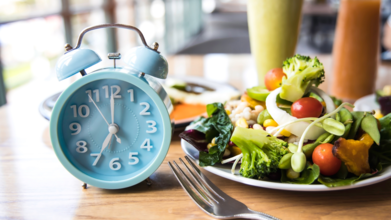
(Credit-Canva)
Intermittent fasting is a very popular way of eating that focuses on when you eat, not necessarily what you eat. The most common method involves eating all of your food for the day within a short time frame, often an eight-hour window, and then not eating anything for the other 16 hours. People like it because it seems like an easy way to get healthier without having to count calories or cut out carbs.
However, is this healthy diet the reason for your declining health? Although it is said to be a good habit for your gut health and digestive health, could it slowly be chipping away at your heart health? A new study published in the Diabetes & Metabolic Syndrome: Clinical Research & Reviews looked into the same and found that it does more than slowly decline your health, it could also raise your mortality rate.
Is Intermittent Fasting Risky?
In the study, more than 19,000 adults has raised some serious concerns. It found that people who ate all their food in less than eight hours a day had a 135% higher risk of dying from heart and blood vessel disease than people who ate over a period of 12 to 14 hours.
This higher risk was found in all kinds of people, but it was strongest for smokers and people who already had health problems like diabetes or heart disease. While the study doesn't prove that intermittent fasting is the direct cause, it's a strong warning sign that it might not be a completely safe and easy way to get healthy.
Pros And Cons of Intermittent Fasting
Some smaller, short-term studies have shown that intermittent fasting can help you lose weight and improve your heart health. However, this new study brings a big concern to the table. An expert said that while this diet might help you lose weight and lower blood pressure, it can also lead to problems like not getting enough nutrients, feeling cranky, having headaches, and even losing muscle.
The main message from this research is that it's important to personalize your diet based on your own health. For now, experts say it's probably more important to focus on what you're eating rather than just when you're eating it. People with heart disease or diabetes should be especially careful about following a strict, short eating window for a long time.
How To Intermittent Fast Like A Pro: Beginner’s Guide
Intermittent fasting can be hard to follow, and it's not recommended for certain people, including those with advanced diabetes, pregnant women, and anyone who has had an eating disorder. Before you start, you should talk to your doctor to make sure it's a safe option for you.
According to the University of Michigan School of Public Health Some of the fasting styles can be very tough for beginners. A good way to start is with a daily fasting plan. You can begin by fasting for just 12 hours a day, which is easy because most of that time you'll be sleeping. As you get used to it, you can slowly make your fasting window longer.
Remember, the key to success is choosing a style that you can realistically stick with. And no matter which style you choose, the quality of your food is still very important. Eating healthy food is just as crucial as following the fasting schedule.
© 2024 Bennett, Coleman & Company Limited

